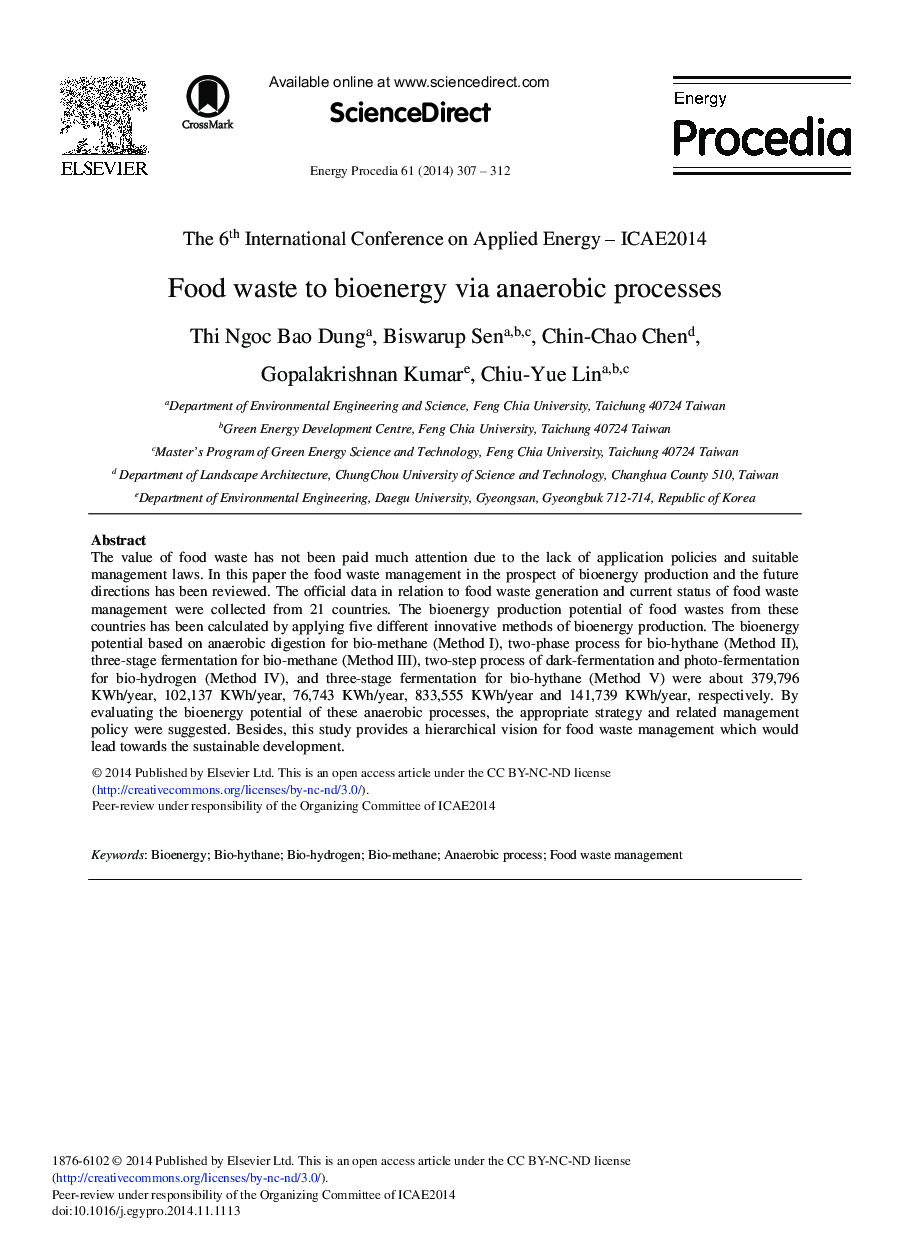| Article ID | Journal | Published Year | Pages | File Type |
|---|---|---|---|---|
| 1510502 | Energy Procedia | 2014 | 6 Pages |
The value of food waste has not been paid much attention due to the lack of application policies and suitable management laws. In this paper the food waste management in the prospect of bioenergy production and the future directions has been reviewed. The official data in relation to food waste generation and current status of food waste management were collected from 21 countries. The bioenergy production potential of food wastes from these countries has been calculated by applying five different innovative methods of bioenergy production. The bioenergy potential based on anaerobic digestion for bio-methane (Method I), two-phase process for bio-hythane (Method II), three-stage fermentation for bio-methane (Method III), two-step process of dark-fermentation and photo-fermentation for bio-hydrogen (Method IV), and three-stage fermentation for bio-hythane (Method V) were about 379,796 KWh/year, 102,137 KWh/year, 76,743 KWh/year, 833,555 KWh/year and 141,739 KWh/year, respectively. By evaluating the bioenergy potential of these anaerobic processes, the appropriate strategy and related management policy were suggested. Besides, this study provides a hierarchical vision for food waste management which would lead towards the sustainable development.
